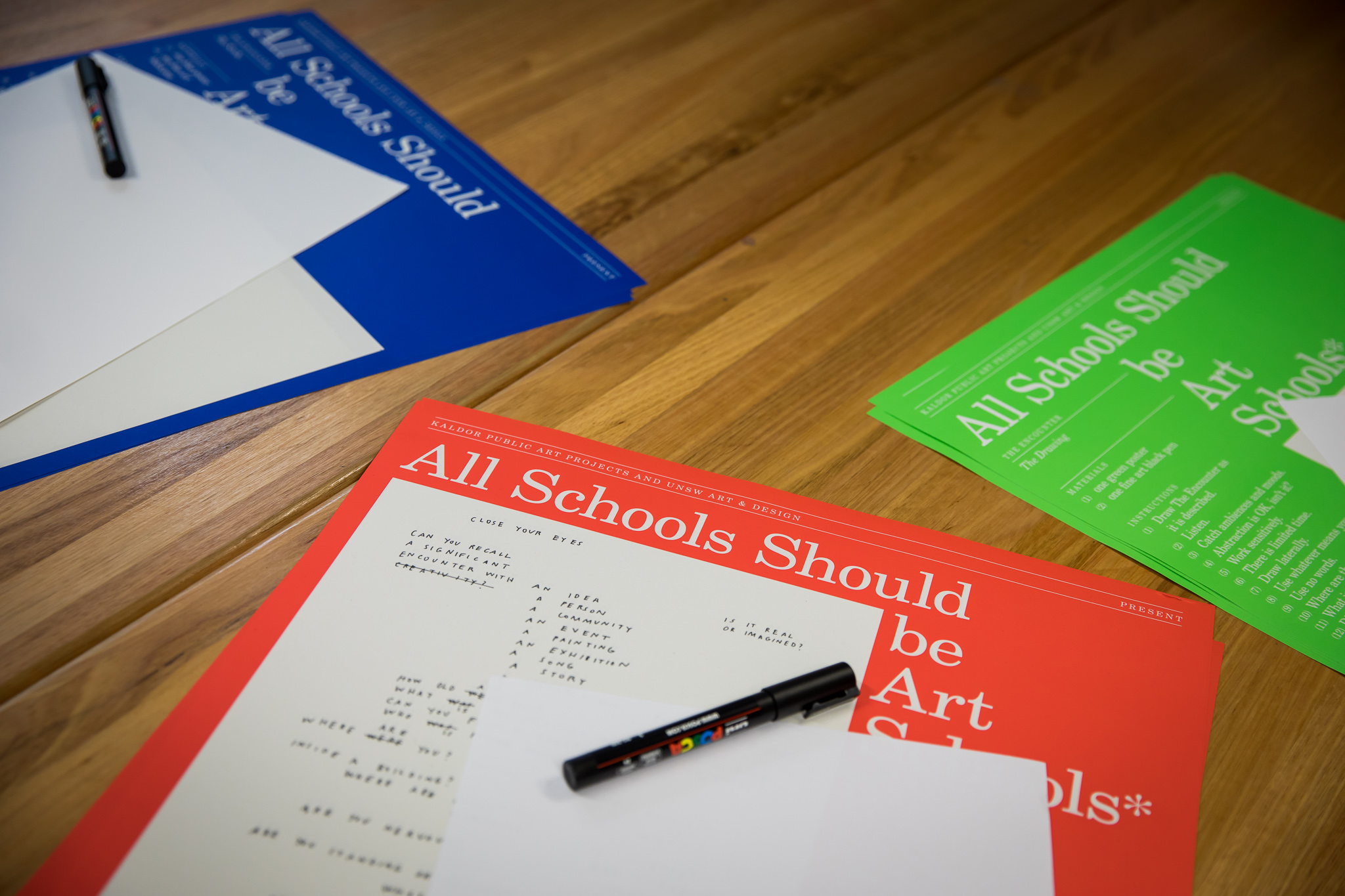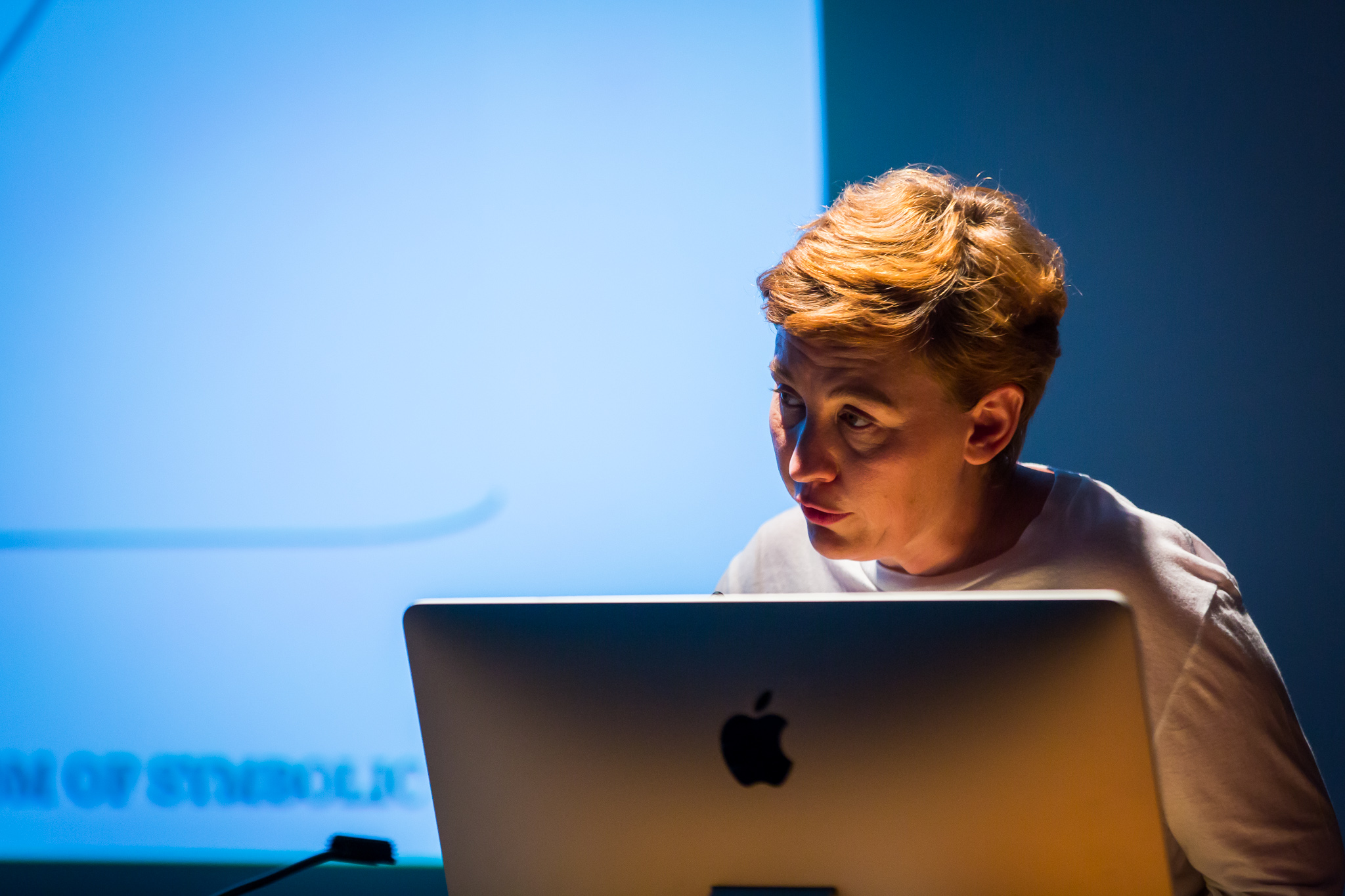
As the NSW state government continues the most significant curriculum overhaul in a generation, leading education advocates, practising educators, researchers and artists gathered last week to discuss the importance of art education.
The one-day All Schools Should Be Art Schools Symposium, presented by Kaldor Public Art Projects and UNSW Art & Design, examined the role of museums, galleries and cultural organisations in supporting creative learning inside and beyond the classroom. All Schools Should Be Art Schools is a slogan coined by British artist Bob and Roberta Smith that voices the artist's argument for more value to be placed on cultural learning.

Sir Nicholas Serota, Chair of Arts Council England, delivered the keynote address to an audience of 230 people, including NSW Education Minister Rob Stokes, Secretary of the NSW Department of Education Mark Scott, and City of Sydney CEO Monica Barone.
Sir Nicholas Serota is an outspoken advocate for art education and is leading the Durham Commission, an 18-month collaboration between the Arts Council England and Durham University designed to explore the benefits of creativity for young people across the UK. Studies have shown that children studying art subjects do better in all subjects, while feeling more valued, empowered and motivated. The study of art subjects promotes empathy, expression, experience, engagement and enjoyment.
“The arts have a special part to play,” Sir Nicholas said. “I encourage you in stimulating the imaginations of young people in new experiences and to develop new ideas... I hope our discussions will allow you to raise your own banners, like Bob and Roberta Smith, and argue that experience and enjoyment in the arts are a fundamental human right that should be available to all and nurtured in everyone.”

In his opening remarks, Minister Stokes said education should not be divided into subject areas such as sciences, arts and humanities. The state’s curriculum review – the first in 30 years – is an opportunity to apply a “truly cross disciplinary lens” to bring all subjects together.
“[Education] is not about a particular result in terms of a product, something that you can hang up on the wall,” Minister Stokes said. “But instead education is about creating us or forming us with an interest in the world around us and the capacity as fully-formed citizens to have ambition for one another and to be fully equipped to serve one another. To do those things we can’t set apart different disciplines in contradistinction of one another, but we need to find pathways to bring them together.”
In chairing the symposium, Dean of UNSW Art & Design Ross Harley said “it’s time to move beyond the dichotomy of STEM and Art in education. We need to embrace the curiosity and creativity inherent in all students from the earliest stages of their learning through to the highest levels of educational attainment.”
Attendees of the Symposium also heard from panellists on topics including exploring new models for collaboration and participated in workshops led by artist Agathe Gothe-Snape.
Educators like Kathrine Kyriacou, a visual arts teacher at Dulwich High School of Visual Arts and Design, said the symposium highlighted the importance of art education, but more needs to be done to recognise the value of art education teachers.
“There are a lot of people sitting outside of schools talking about art education,” said Kyriacou. “What I’d like to see is a change in the role of art in school and society, and to gain respect for what art teachers do and know. The role of the art teacher often comes as an afterthought. I am thrilled we have a forum on art education, but I’d love to see the ideas from today have an impact in schools across the state.”

